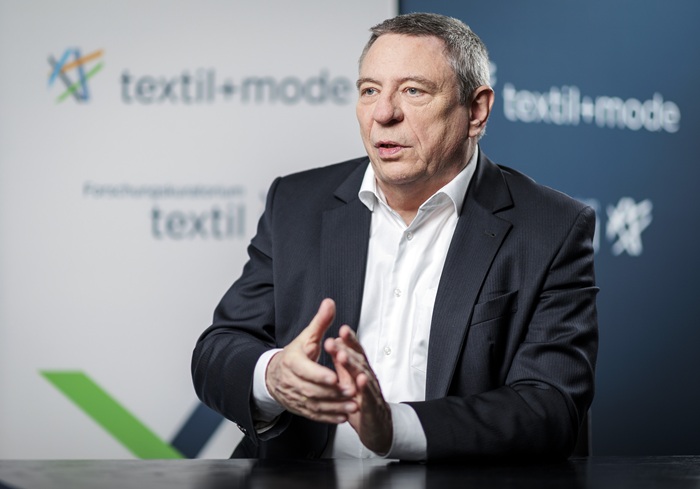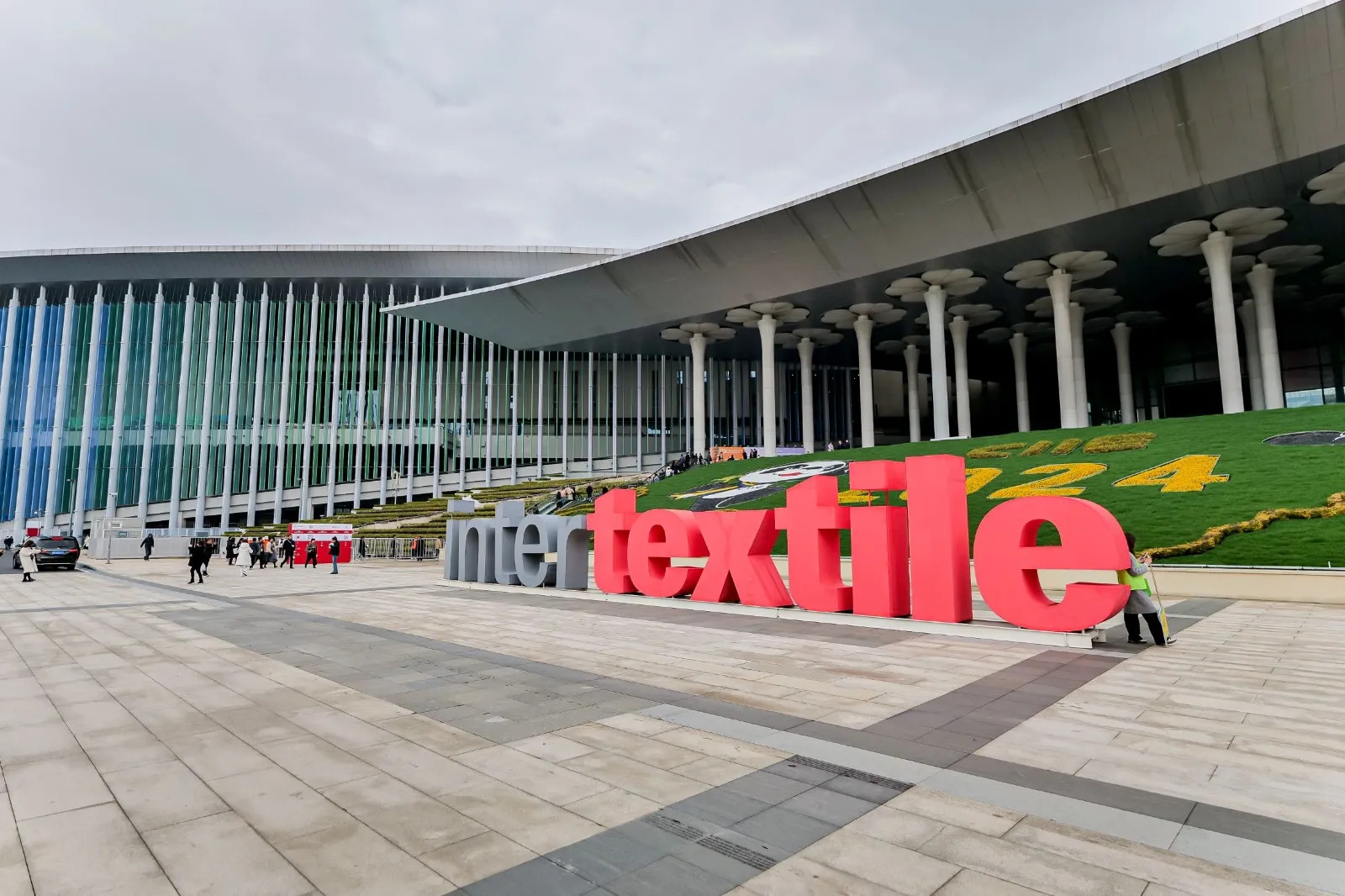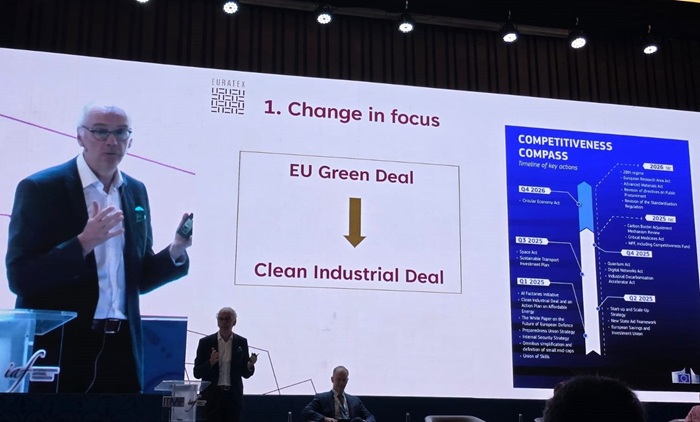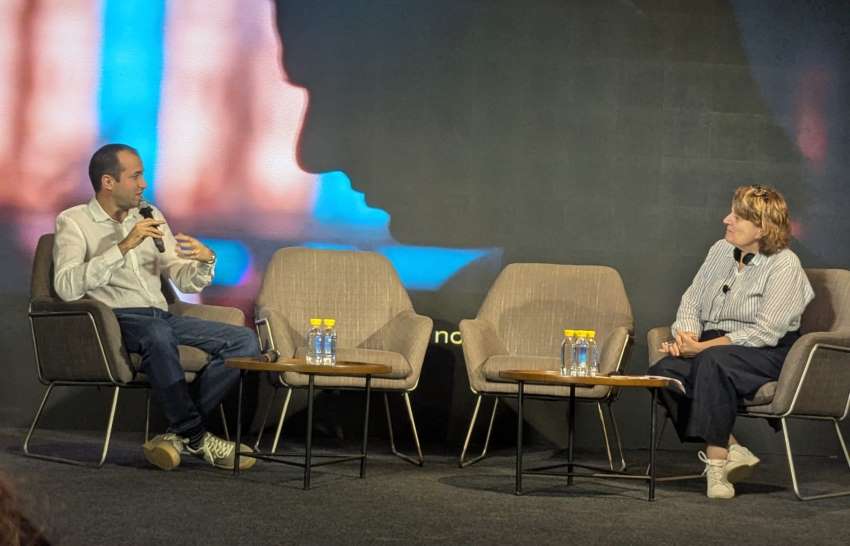FW
India is the world's largest producer of cotton and also the second largest exporter. The present cash crunch is leading to delays in sales of cotton and is creating shortages in the domestic market as well as reducing supplies to the global market, the International Cotton Advisory Committee (ICAC) said in its latest report.
The ongoing demonetization process, marked by insufficient supply of new currency notes of Rs 500 and Rs 1,000 notes, has resulted in reduced supply of cotton to the global market. Since much of Indian economy operates on a cash basis including payments to farmers, the present situation has led to delays in sales and shipments of cotton.
Due to the delay in Indian cotton reaching the global market, other countries may benefit from increased exports in the short term, said ICAC. It has predicted exports of India to fall by 34 per cent to 825,000 tons in 2016-17. However, it added that the effect of the currency crisis will be limited as it is likely to be resolved in the near future.
Exports from the US are projected to increase by 29 per cent to 2.6 million tons, remaining the world's largest exporter. The sizeable crop anticipated in Australia is likely to cause its exports to increase by 21 per cent to 750,000 tons. Exports from Burkina Faso and Mali, the sixth and seventh largest exporters, are expected to increase by 13 per cent to 295,000 tons and by 17 per cent to 255,000 tons, respectively, as a result of larger crops.
According to ICAC, cotton from these origins may replace some of India's exports if their crops reach the global market soon. Meanwhile, for the second consecutive season, Bangladesh is expected to be the largest importer of cotton in 2016-17 as its mill use continues to grow with imports expanding by 1 per cent to 1.4 million tons.
Cotton arrivals in Gujarat have fallen sharply as farmers are holding on to inventories and this has resulted in an artificial supply shortage and rise in cotton prices. Gujarat is the largest producer of cotton in India.
Prices of the popular Shankar-6 cotton have gone up by about Rs 1000 per candy in the last three weeks. The adverse impact of demonetisation on disposable incomes and consumer spending has resulted in a slowdown in domestic demand for apparels and other end-products of the textile industry in the immediate term.
The inventory accumulation with retailers will, in turn, cause deferment of purchases from apparel or home textile manufacturers in the near term, besides resulting in stretched payments. This, will affect the cash flow in the textile industry and is likely to drive a constraint in the demand for the entire textile value chain.
The harvest season for cotton begins in October, with major cotton arrivals happening till March. New cotton arrivals are typically accompanied by softening of cotton prices from the levels during April to September. The impact is expected to be pronounced on the unorganized segment, which forms a large part of the domestic textile sector where cash transactions are more prevalent, as a reduction in currency circulation would temporarily affect their routine business transactions.
However, the slowdown in cotton arrivals is a short-term phenomenon, which has already started to correct. Farmers have gradually started accepting alternate modes of payments.
The Blackland Income Growth Conference cotton session will be held at the Extraco Events Center in Waco on December 13. New trends in cotton production and a policy update from the National Cotton Council, will be part of the cotton session of the conference. The conference is being sponsored by the Texas A&M AgriLife Extension Service and the Waco Chamber of Commerce.
Julie Borlaug, Associate Director, external relations at the Borlaug Institute for International Agriculture at Texas A&M University in College Station, will be the keynote speaker. The session on cotton will feature ‘Importance of Weed Management Systems Limitations, Prices, Laws’, by Pete Dotray, Texas A&M AgriLife Research weed scientist; Cotton Root Rot Disease Update, Tom Isakeit, AgriLife Extension plant pathologist; Cotton Yield, Fiber Quality, Demonstration Updates, Gaylon Morgan, AgriLife Extension state cotton specialist, College Station; Policy Update from National Cotton Council, Craig Brown.
Cambodian prime minister Hun Sen has urged garment workers to improve their productivity to prevent factories from closing down and moving to other countries like Laos, Bangladesh and Myanmar, all of which have lower minimum wages. He also pointed out relatively rapid gains in the minimum wage for Cambodia's garment workers which was recently set at $153 a month for the coming year.
Miguel Chanco, lead ASEAN analyst for the Economist Intelligence Unit, agreed that countries such as Myanmar and Bangladesh present a real threat to Cambodia's garment industry, primarily because its much more expensive to hire workers in Cambodia. The steep increase seen in minimum wage of Cambodia's garment industry since 2013, means it now costs twice as much to hire someone in Cambodia compared to Myanmar and Bangladesh.
According the president of the Bangladesh Garments Accessories and Packaging Manufacturers and Exporters Association (BGAPMEA) Abdul Kader Khan feels, the sector will act as catalyst for the $50 billion RMG export target achievement. Given adequate government support, RMG accessories can contribute over 25 per cent in achieving the RMG export target by 2021.
Khan says Bangladesh can meet about 100 per cent of local demand as manufacturers have full-fledged production capacity but due to buyers’ recommendations, RMG manufacturers have to source from abroad. To be self-dependent, more investment in modern technology and creating more skill manpower is needed, he added.
Asked if Bangladesh has enough skilled manpower, Khan averred that skilled manpower is a key to producing best quality products. But the country doesn’t have enough skilled workforce by trying hard to establish a training institute to train workers. If the government provides land and financial support to establish a training institution, it will help Bangladesh to meet 100 per cent local demands.
Further, answering a query as to how can accessories help earn $50 billion target by 2021 Khan observed that the RMG sector people had set an export target of $50 billion by 2021. It is possible, but not only by the RMG manufacturers, but also by other stakeholders like accessories. If the government provides all-out support to the sub sector, the sector will be able to contribute 25 per cent out of $50 billion RMG export target by 2021.
Later, answering a question as to what is needed to produce international standard products in high-end product segment, Khan maintained that fashion trends and designs are changing every day across the globe, while the innovation is taking place in technology. To cope with the change, investment in new technology is a must. Here, the government must come up with a tax waiver on the import of machinery and low cost funds.
"Oerlikon introduced about 14 innovations in the ITMA Asia show. The same line up has been showcased at ITME India as well. These innovations are in the area of spinning, fibres, yarn and texture value chain. Talking about the opportunities that ITMA Asia presented, Andre` Wissenberg, Vice President, Head of Marketing, Corporate Communications and Public Affairs, Oerlikon, said, “ITMA Asia is certainly an important event. China is a very crucial market for us in the manmade fibres segment. The show gives us some positive signs pertaining to the market’s revival."
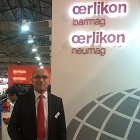
Oerlikon introduced about 14 innovations in the ITMA Asia show. The same line up has been showcased at ITME India as well. These innovations are in the area of spinning, fibres, yarn and texture value chain. Talking about the opportunities that ITMA Asia presented, Andre` Wissenberg, Vice President, Head of Marketing, Corporate Communications and Public Affairs, Oerlikon, said, “ITMA Asia is certainly an important event. China is a very crucial market for us in the manmade fibres segment. The show gives us some positive signs pertaining to the market’s revival. The market for manmade fibres was not performing well for the last one and half years, but this time we got a good number of visits and interest among visitors was really encouraging. The China market is really big, it has big clients & companies and the kind of negotiations we witnessed there were clearly indicative of revival.”
India opportunities

The investments in manmade fibres segment have really gone up in recent years here. There is no doubt that the market for synthetic fibres is dominating the textile sector globally and India is no exception to this trend. Big investments in polyester segment are taking place whether it is the Indian market or the overseas markets. The centres for manmade fibres are China, Turkey, India and US. The US for PCF, turkey for polyester and Nylon and China for polyester are doing absolutely good. About 80 per cent of the total polyester production is done by China alone. India holds a huge potential of course in the manmade fibres segment, big investments are pouring in here and so do Vietnam, Bangladesh and Indonesia. “The country is growing organically, and we take this as an important market after China,” avers Wissenberg.
Innovations at Oerlikon
The popular is ETY solutions and EIFK HQ launched first time in India. HQ stands for ‘high quality’ and ‘high quantity.’ This is the first four deck texturisation machine in the world which gives 50 per cent increased productivity than any other machine in this category, it also helps saving energy, it is also one of the largest machineries in its league. Customers are quite positive about this product. The second thing is we provide the Indian consumer future-oriented customer services. This technology has been developed in a partnership with the help of Microsoft. Through this technology, you get augmented reality in the plant. You receive additional info into the glass. You have skype connection with it. This helps operator to fix the problem instantly. Through this, the experts in Germany or China can have a look at the problem the way it is before the operator and both can fix the problem together. This is a win-win situation for both. We save money since we don’t need to send experts to the place where there is a problem and the client gets the benefit of instant resolution to the problem, it saves money, labour, time and without any interruption in the production. This is called intelligence plant control (IPC). The service is customised and expensive, so we are having constant consultation with people interested in the technology. In this technology, we can fix the problem from any corner of the world, elaborates Wissenberg.
Competitive landscape
“We don’t see any competitor for us in this technology as far as the fair is concerned. People are working on these lines but have not been successful the way we have been until now. But innovations are constantly happening. We are the frontrunner as of now. We are trying to find the best solutions for the customer. We have been showing new winding machines also. We have some new recycling concepts,” felt Wissenberg.
Tech acceptance
Talking about the technology appetite of Indian companies, Wissenberg said, “In India, we have big companies like Reliance which produces not only for the domestic population but has a fair share of export market too. Since we are the number one in this segment, people are very likely to come to us. Indian market is growing and quite big, we are sure to make our mark here. Of course, there is competition but we are doing good. Also since the market is growing, we will have good demand for our products. Especially the eastern part and Silavasa area in Mumbai are witnessing a good growth, requiring big investments in spinning and weaving. There is traction in the market. We are focussing on Silvasa and New Delhi area.”
Teijin will integrate its industrial-application polyester fibers business and the products converting business group to form the new fibers and products converting business group. The aim is to strengthen and expand these businesses under a new structure.
Industrial-application polyester fibers are currently part of the high performance fibers business, which is in advanced fibers and composites business group. The unit will specialise in aramid fibers business after the reorganisation. The reorganisation will establish a structure for providing maximum customer value with existing polyester and aramid fiber products and services for industrial applications. It will also facilitate new development activities.
The new business group will strengthen competitiveness of Teijin’s polyester fiber businesses and develop solutions based on Teijin’s highly competitive materials. For apparel applications, it will strengthen development through the establishment of an extra-reliable supply chain that integrates R&D and raw material and fiber production with existing textile processing and sewn products supply functions.
The group will develop an integrated system—from production to sales—and leverage the expertise of existing products converting business group by complementing business functions in polyester fibers for industrial applications. The decision to form the unit was based on Teijin’s recognition of synergies between its development and production functions for polyester fibers and processing technologies and marketing functions for textiles.
Three Japanese companies have taken the lead in carbon fibre production. The companies -- Toray, Teijin and Mitsubishi Rayon -- along with the University of Tokyo are developing a government-funded project that involves the country’s three major players along with a promise to resolve the major issue of its current high cost that is prohibiting progress in a number of industries, most notably the mass consumer car market.
Speaking at the 2nd International Composites Congress held in Dusseldorf, Germany, on November 29th, managing director of Japan’s National Composites Centre based at Nagoya University, Professor Takashi Ishikawa, spoke of new carbon fibres that are now nearing commercialisation following the Innovative Carbon Fibre Project over the past few years. They are based on new fibre precursors which require no oxidisation and with carbonization being carried out by microwave the key energy consuming stages in carbon fibre production which limit the output of current lines to around 2,000 tons a year along with a dry plasma surface treatment.
These three features particularly the elimination of oxidisation will result in great energy savings in carbon fibre processing, cutting energy consumption by more than fifty per cent compared to the current so-called Shindoh Process. This means that the lowest cost carbon fibres will be realised once full scale lines are in operation. The potential output per line will be more than 20,000 tons annually.
Cotton prices in Brazilian cotton market resumed their upward trend in the later part of November. In the first fortnight, cotton prices increased slightly but stabilised mid-month only to see rising trend in end of November. This was stated by the Center for Advanced Studies on Applied Economics (Cepea-Brazil) in its latest fortnightly report.
The scenario before the end of the month was linked to the gap between bidding and asking prices which, in turn, was related to the quality of the cotton available in the market. When the quality was high, agents disagreed about the available volume and while some of them believed cotton supply was already low, others claimed that there were still batches to be traded in the off-season period.
However, later in the month, when Brazilian cotton prices resumed, trading companies and cotton growers that were active in the market were firm in their asking prices keeping an eye on the fluctuations of international and dollar quotes and on the low supply of high-cotton-quality from the 2015-16 season. During the second fortnight of November, few processors were seen showing interested in new cotton purchases in the spot market. On the other hand, trades involving cotton for delivery in 2017 were seen at a good pace. Dealers were more active in the spot market, buying and selling cotton batches.
According Brazilian Stock Exchange of Goods (BBM) data tabulated by Cepea, 67.9 per cent of the 2015-16 Brazilian crop estimated at 1.28 million tons had been traded until late November. Of that total, 49.2 per cent was allocated to the Brazilian market while 50.8 per cent to the international market. Regarding the 2016-17 crop estimated at 1.4 million tons, 23.1 per cent has been traded. Of this, 24.5 per cent was allocated to the domestic market and 75.5 per cent to the international market.
A recent report published by Markets and Markets, a leading market research firm, ‘Textile Coatings Market by Type (PVC, PU, Acrylics, SBR, Natural Rubber) End-Use Industry (Transportation, Building & Construction, Protective Clothing, Industrial, Medical, Sports, Agriculture, and Packaging) - Global Forecast to 2021’ , says the size of the global coatings market that stood at $5.51 billion in 2015 and is projected to reach $6.81 billion by 2021 at a CARG of 3.5 per cent. The report indicates, rising industrial, transportation and building and construction are driving the market for textile coatings. Along with these, increasing quality and performance standards in textile coating based fabrics are also driving the market.
Asia-Pacific dominated the market in 2015, China being the largest consumer of textile coatings in the world. Demand is driven by the diverse industrial markets ranging from building and construction, automotive, industrial, and protective clothing, among others. The ensuing increase in investments and rise in the number of new manufacturing establishments are anticipated to lead Asia-Pacific to emerge as the prime driver for the growth of textile coatings market, says the report.
According to the report, industrial segment for textile coatings includes industries such as oil and gas and manufacturing among others. Growth in oil and gas and manufacturing industry will drive the textile coatings market. North America is expected to witness growth in oil and gas and manufacturing industry due to the recent discoveries of shale gas and shale oil in the region and strong manufacturing base in the US.
Other countries such as Argentina, India, UAE, South Africa, Australia, Malaysia and Chile are expected to see fastest-growth in the manufacturing industry.


